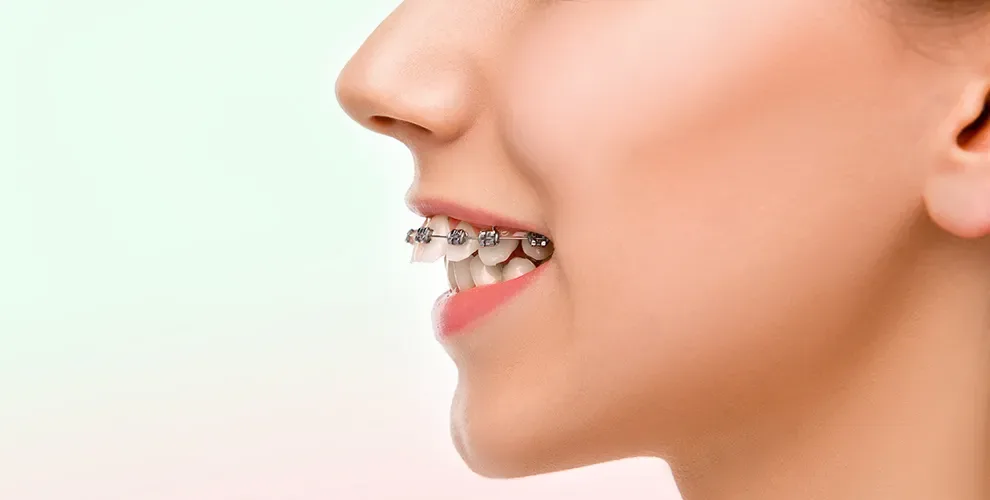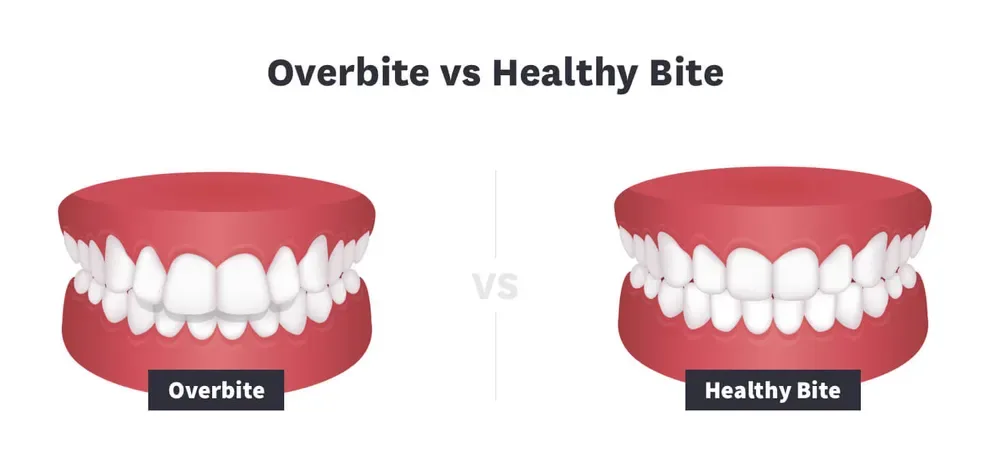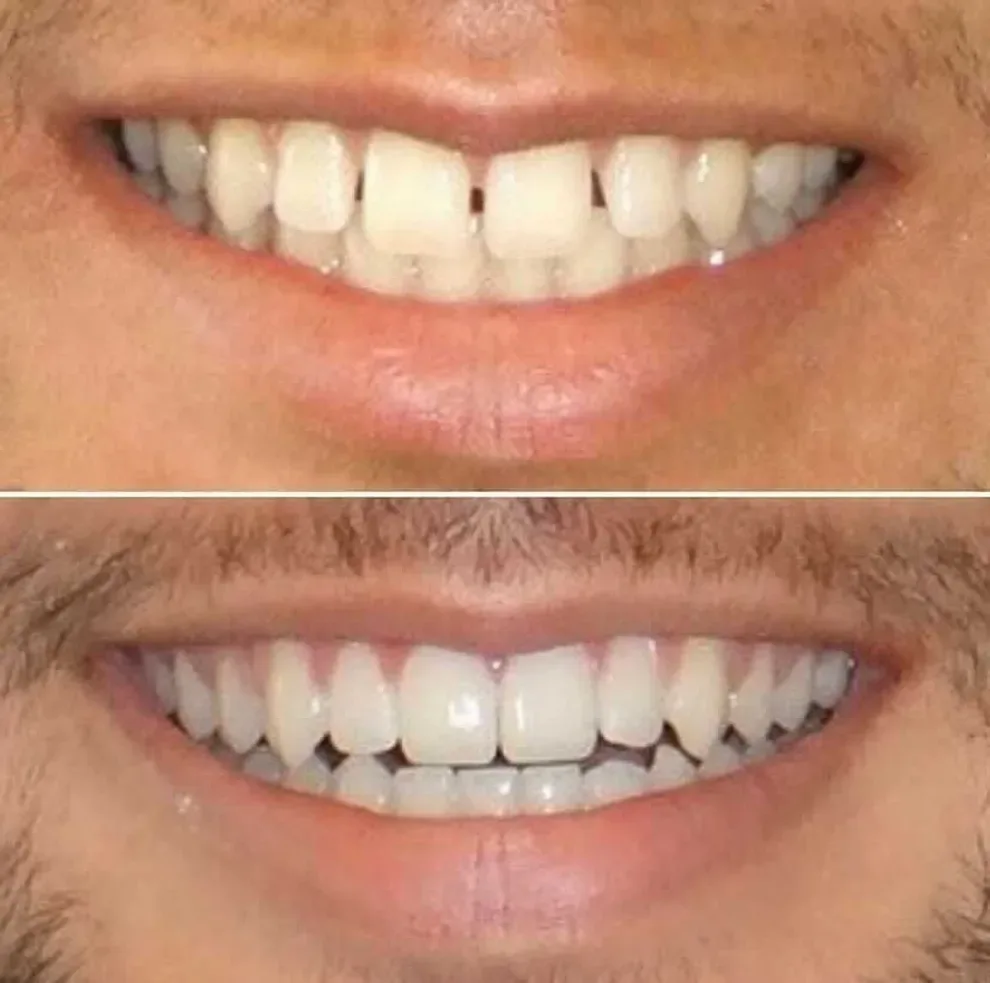How to Get Rid of an Unsightly Overbite for Good

Table of Contents
- What Is an Overbite?
- Overbite Types
- Related Issues
- Importance of Correction
- At-Home Treatment
- Surgery
- Pulling Teeth
There are different treatment options for an overbite, depending on its severity. Treatment can also depend on the cause of your overbite.
Often, genetics determines how our teeth and jaws develop and fit together. When this issue is caught earlier in life, a pediatric dentist can guide a child’s jaw and teeth as they form, which can reduce later issues.
You may end up with an overbite in adulthood even if you had braces as a kid. Adult teeth can shift over the years.
Fortunately, you can get rid of an overbite for good with a range of treatments, including braces, at-home aligners, and other approaches.
What is an overbite?
When dentists talk about occlusion, they mean the alignment of your teeth. A malocclusion means that there is a deviation in how your teeth should fit together, which is typically an alignment issue like an overbite, underbite, or crossbite.
While there are subcategories of these types of bite problems, the term overbite generally refers to when the upper teeth stick out too far over the bottom teeth. An overbite may also be called a deep bite or a closed bite.
An overbite can make it hard to close your lips, cause your jaws to fit together incorrectly, make taking bites difficult, and lead to other oral health issues.

Types of overbites.
There are three types of malocclusions, two of which are overbites. These two are:
This is the most common type of overbite. Though the overall bite is normal, the upper teeth somewhat overlap the lower teeth.
Also called retrognathism, this type of overbite is more serious and will probably need to be corrected with dental appliances like braces or aligners.
Causes of an overbite include:
Abnormal alignment of your teeth that causes the front teeth to push forward.
Having extra teeth, like wisdom teeth, which cause a forward adjustment of the rest of the teeth.
Ill-fitting dental fillings, crowns, implants, aligners, or braces.
Misalignment of the jaw after an injury, fracture, or illness.
Tumors in the mouth and jaw.
There are two basic types of overbites, but both involve your upper front teeth jutting over your lower front teeth, and it can lead to a closed bite, deep bite, or bucktoothed appearance.
Issues related to overbites.
If you are able to speak clearly, chew and swallow food, maintain a good oral hygiene routine, and do not have frequent pain in your neck or jaw, you may not feel like your overbite needs to be fixed. However, overbites can cause many symptoms that are uncomfortable and even painful.
Symptoms may include:
Crooked teeth that you feel embarrassed about.
Unusual or abnormal face appearance.
Discomfort when chewing or trouble taking bites of certain foods.
Speech difficulties, including a lisp.
Mouth breathing, or trouble closing the lips, especially at night.
The younger you are when you begin treatment for an overbite, the easier it is to correct. Still, overbites can appear or reappear in adults as teeth shift over the years.
There is no age limit on fixing an overbite. If you have misaligned teeth that jut forward, you can get a great smile no matter how old you are.
Why should I correct my overbite?
Many people live with overbites, even serious ones. But getting treatment for this dental issue can make you feel more comfortable and boost your overall health.
Goals of treatment include to:
Make teeth easier to clean to reduce tooth decay.
Reduce pressure on enamel, which reduces tooth decay.
Eliminate strain on the jaws, teeth, and muscles in the face.
Reduce clenching and grinding of the jaws and teeth due to poor alignment.
Prevent biting into the gums, cheeks, or roof of the mouth, which can cause pain or sores.
To start getting treatment for your overbite, you would typically need to go to an orthodontist. This specialty dentist would take x-rays of your mouth to understand the alignment of your teeth and how to correct them. You may also need to get x-rays of your skull so your orthodontist can see how your jaws align.
Once the orthodontist understands why you have an overbite, they can plan for how to correct it. This may include braces, aligners, elastic bands, and other orthodontic devices.
Treatment timelines usually range from one to two years with traditional orthodontic equipment. The specific timeline depends greatly on the severity of your overbite.

More adults are turning to at-home approaches to straighten their teeth. If you think you have an overbite, you can diagnose this at home to a certain extent.
Here are some steps to try at home:
Close your mouth normally, with your teeth resting gently together. Do not force them or grind them, as this can hurt and produce exaggerated results.
Look in the mirror and smile. Stand as close as possible so you can see your teeth. Check if your upper teeth extend over the bottom of your lower front teeth.
If the overlap is noticeable and more than 3.5 millimeters, you have an overbite.
In some cases, you may also feel your lower teeth biting near, or even hitting, the roof of your mouth.
At-home overbite treatment.
Medical research suggests that clear plastic aligners can, for many people, work as well as braces, with a shorter treatment duration. There is also less embarrassment associated with this form of teeth straightening because teeth aligners are not as noticeable as braces.
One survey of eight papers found that there was no significant statistical difference between using traditional braces and clear aligners when it came to overbite results. The review noted that there may be severe situations in which aligners alone are not the right course of treatment. Most people who used aligners had a much shorter treatment duration, which could be better for the customer’s emotional health.
A specific case review in a different publication suggests that when using aligners to correct an overbite, it can take less than a year to adjust teeth into a healthier alignment. The case involved 12 clear aligners, changed each week, with a follow-up orthodontist appointment after those 12 aligners were used. Once that appointment was complete, another set of 12 aligners was distributed. The entire treatment took 36 weeks.
While there were a few additional steps after the aligner treatment was completed, the focus of treatment was using plastic aligners, demonstrating their effectiveness for even moderate problems.
One of the greatest benefits of at-home aligner treatment is access to an orthodontist to consult on your treatment, without having to leave your home. You will start by making impressions of your teeth, which are sent to the aligner company for review. If you have a mild or moderate overbite, an orthodontist can usually develop a treatment plan for you to follow.
Not every type of overbite can be corrected with at-home aligner treatment. Some companies refund the cost of your impression kit if they determine you aren’t a good candidate.
At the end of your treatment, you’ll receive a retainer to wear at night. This helps to maintain the results of your treatment, ensuring that your unsightly overbite is gone for good.
Correcting an Overbite with Surgery
When a person outgrows the ability to have growth modifications, or the degree of malocclusion is more extreme, orthognathic surgery can be used to both enhance the appearance of the face and jawline, and correct the alignment of the teeth.
Complete evaluations by both an orthodontist and a maxillofacial surgeon are necessary.
Before surgery is considered, your doctor will take comprehensive x-rays and fully discuss treatment options. It can be difficult to deem this type of surgery as “medically necessary” for insurance purposes unless there is a severe amount of deformity. This means payment is often out-of-pocket and can be cost prohibitive.
This type of jaw surgery moves the lower mandible forward by making small incisions in the jaw and then fixing the bones in place with plates, screws, and/or wires or rubber bands. It typically requires a hospital stay of a few days and a few weeks off work or school.
Surgical correction of an overbite is commonly combined with orthodontic treatment both before and after the surgery to move and align both the teeth and jaw properly. Before the surgery, orthodontic treatment can help move the teeth into place over the bone. After the surgery, orthodontics can help to set the surgery, and keep the teeth and bones in their proper and new places.
Pulling Teeth to Correct an Overbite
The option to pull teeth is typically considered a last resort when fixing an overbite. It is only done in extreme cases.
If the overbite is significant and teeth are protruding, they may need to be pulled to make more room in the mouth for the correction. Pulling teeth is less invasive than jaw surgery, but it is still only considered after other options are fully exhausted.
Teeth may need to be pulled if the upper and lower jaws do not seem to match up. They are removed in an effort to shrink either the upper or lower jaws to help them align better. Pulling teeth can make the jaw seem smaller and therefore help the overbite to appear less apparent.
It is important to consider how the upper and lower jaw work together before looking at the relationship of the teeth.
In the case of extreme overcrowding along with an overbite, pulling teeth can allow the remaining teeth to have more room and make moving them with orthodontic treatment easier. Pulling teeth can help to bring the front teeth back in line and back into the mouth, as they can be pushed out by additional teeth.
Generally, orthodontists would prefer treatments like braces or aligners before pulling teeth or considering surgical options. Braces and aligners are less invasive. By correcting the positioning of the teeth, they can serve to shrink the jaw.
Overbite FAQs
No, overbites do not go away on their own. Although most adults’ teeth shift out of alignment over the course of their lives, they do not shift back into proper alignment without orthodontic treatment.
When teeth are out of alignment, also called a misalignment or malocclusion, this problem is likely to get worse without appropriate orthodontics. Treating an overbite before it becomes severe improves your smile and your oral health.
While you should not panic about having an overbite, it is important to get it treated by dental professionals. There is a difference between healthy concern and anxiety, however. Concern can lead you to take steps to improve your health, while anxiety might cripple you.
Do not worry or become anxious because there are solutions to oral health issues. Get in touch with your dentist to ask about orthodontics that might correct your overbite, or contact an at-home aligner company to see if you are a candidate.
Many adults simply ignore their dental misalignments, especially overbites, as they are very common. However, ignoring your overbite risks making your oral health worse overall.
Misaligned teeth — even small, hard to notice overbites — can make it harder to bite into food. They put uneven strain on your teeth, increasing damage to enamel. They can trap food, making it more difficult to clean your teeth.
All these issues can cause cracks in your teeth and tooth decay, which can lead to gum disease and further tooth decay, even in properly aligned teeth. The worse an overbite gets, the more gum disease can misalign your other teeth. Treating an overbite keeps your mouth healthy.
You should treat your overbite when it is diagnosed. You may not notice your overbite, but going to a dentist for regular checkups and cleanings means you are more likely to have misalignments like an overbite noticed by a medical professional who can help you do something to solve it.
Orthodontic treatments have improved a lot over the last few decades, so it takes less time than ever to fix an overbite. However, the duration of orthodontic treatment depends on how long you have had the overbite and how misaligned your teeth have become as a result. You may also need to treat additional misalignments in your teeth that have been caused by your overbite.
If your dentist diagnoses an overbite early, you might only need a few weeks or months with clear aligners. If you have a more severe overbite, you still might only need a few weeks or months, depending on the approach to treatment and what your dentist thinks is necessary.
The best overbite treatment is a combination of what your orthodontist recommends and what best suits your lifestyle. For many adults, this means getting clear aligners, which are now widely available, inexpensive, extremely effective, and can be shipped right to your door.
